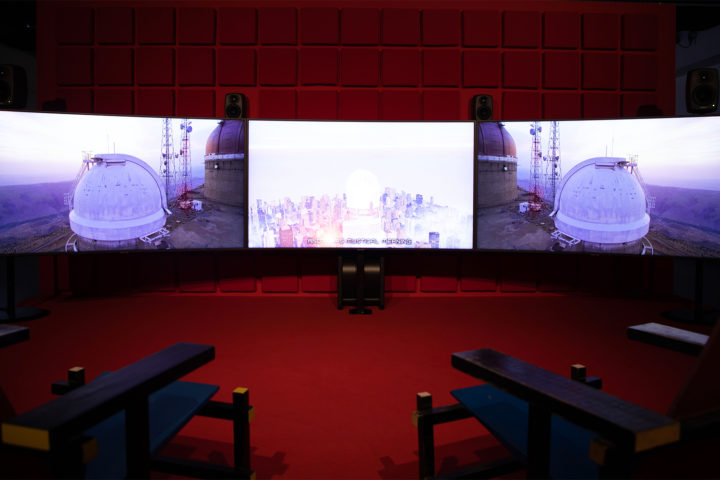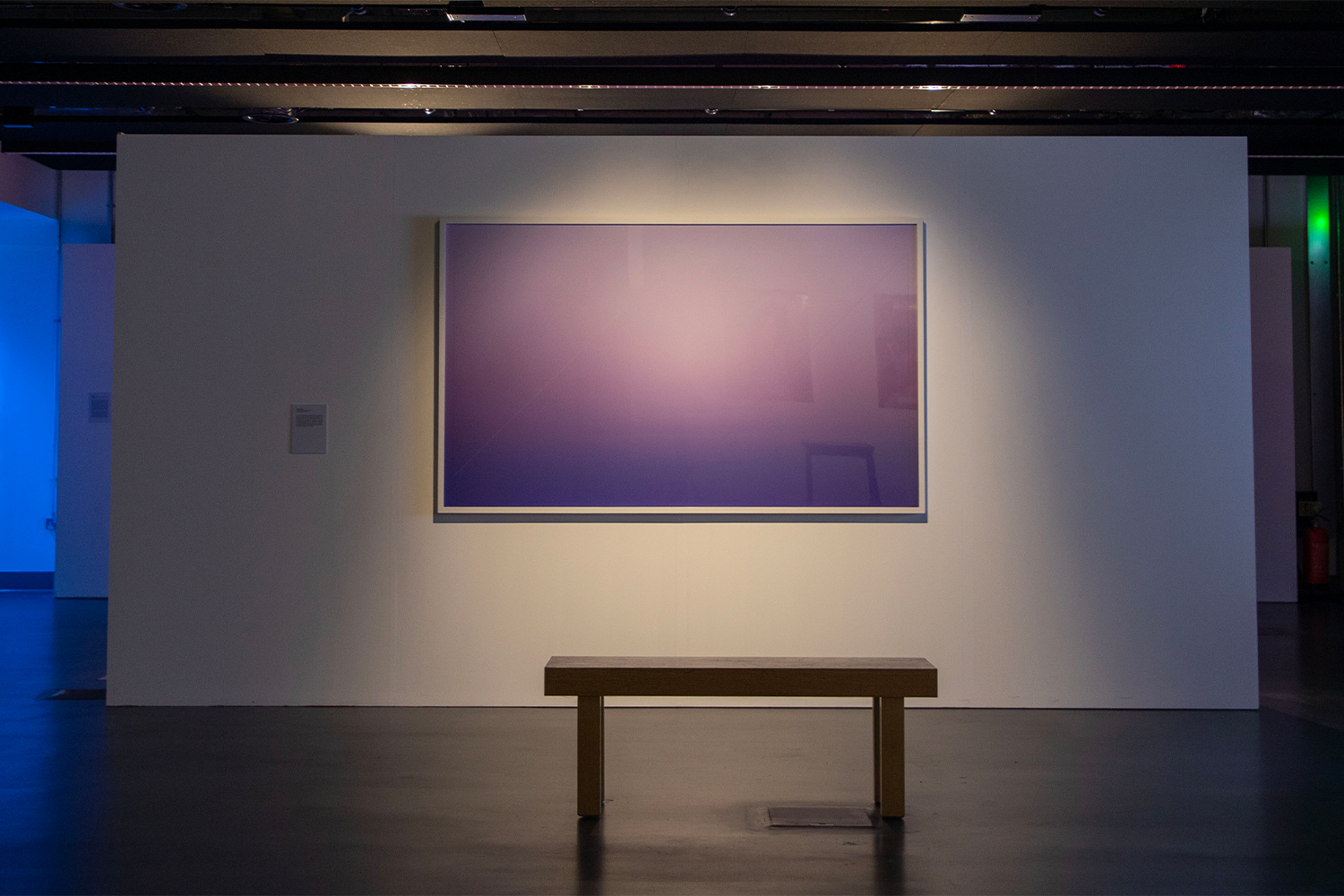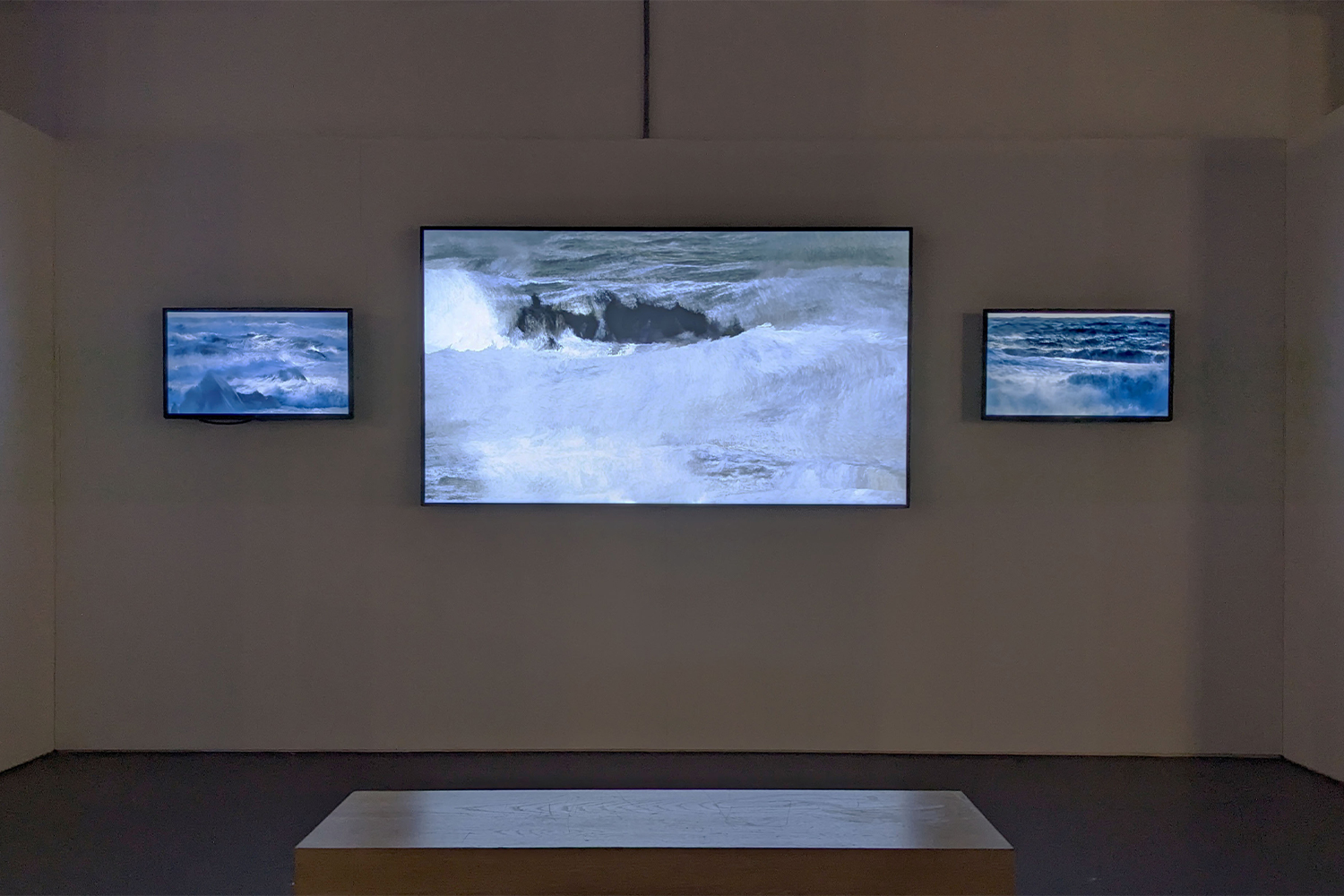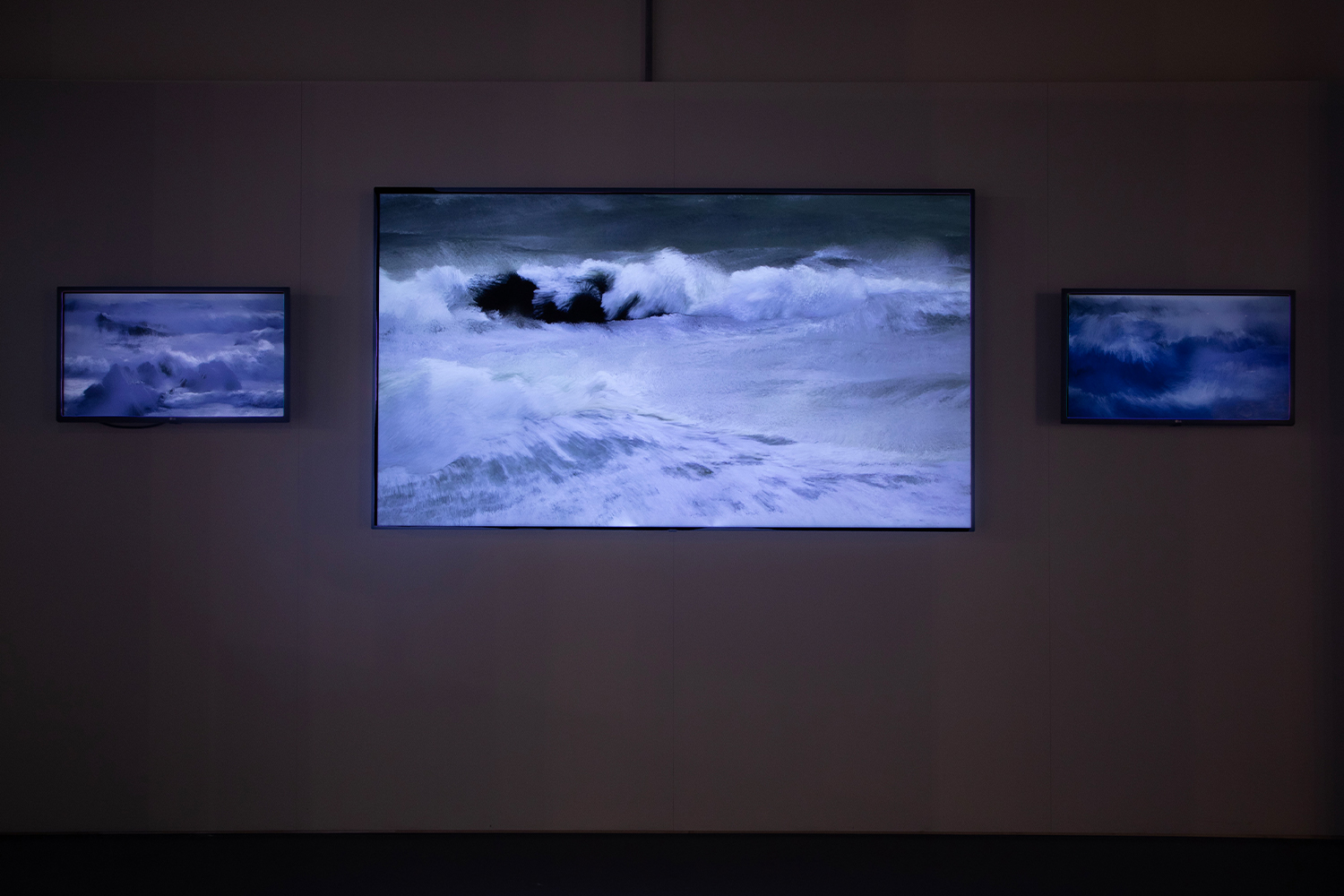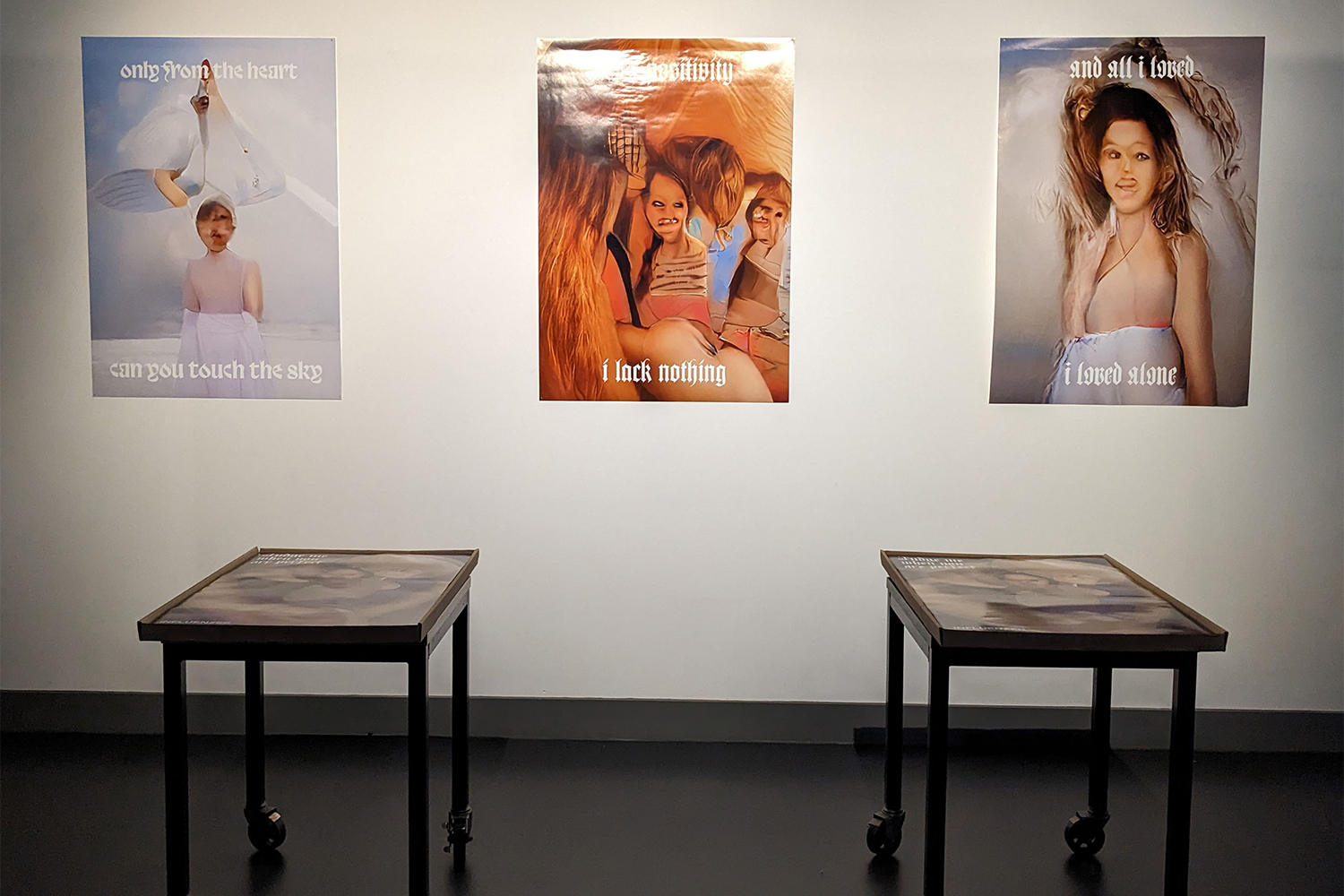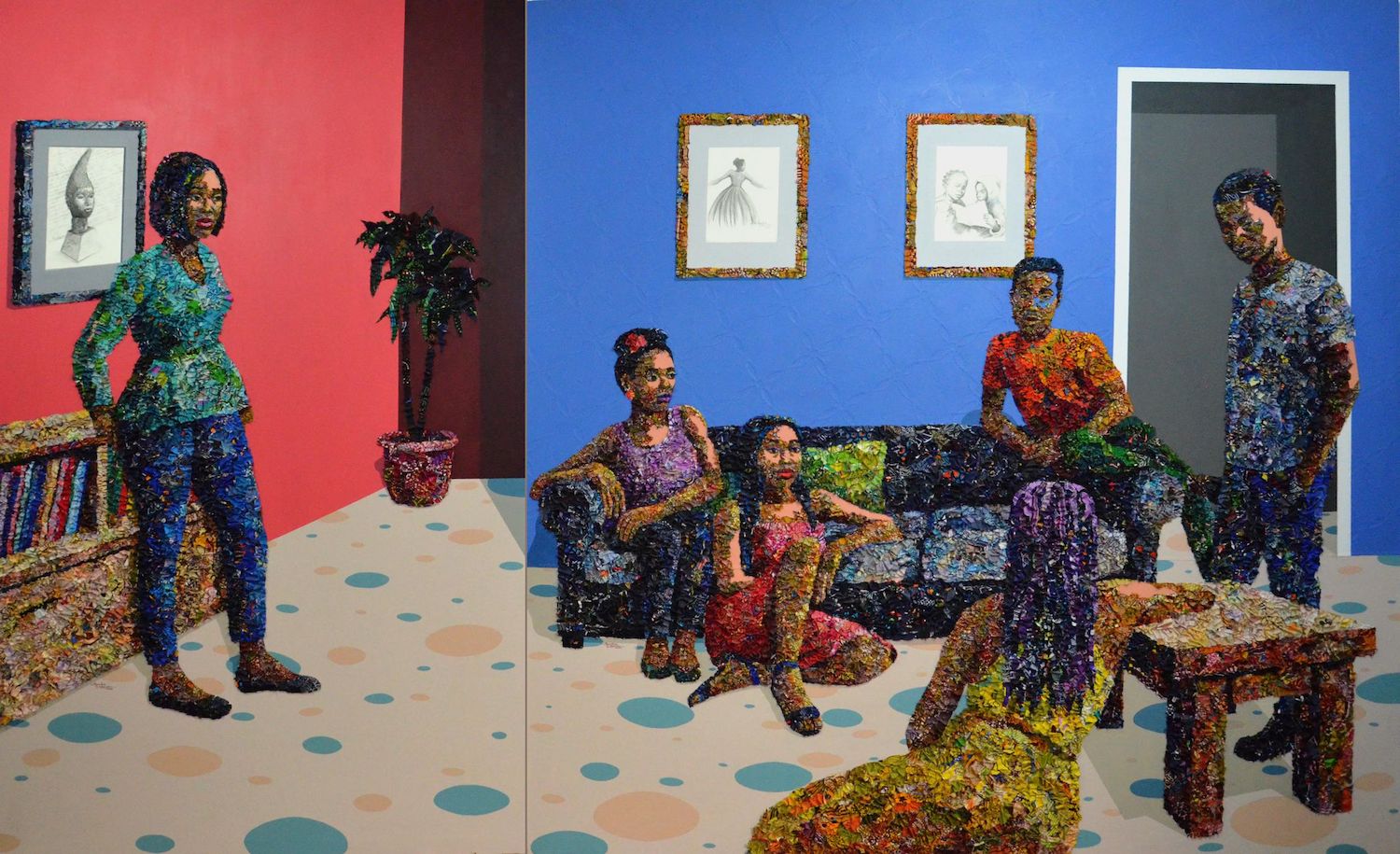Highlighting the ubiquitous use of game-engine technologies in contemporary media and information systems, Modal Gallery’s inaugural exhibition “Slip.Stream.Slip” offers an important opportunity to consider and interrogate the implications of this pervasive technology in our everyday lives. Entering into the dimly lit gallery, illuminated by the glow of digital screens, we encounter a space that feels both otherworldly and familiar.
In this group exhibition, curated by Valentino Catricalà, sixteen international artists explore tensions and slippages between real and simulated worlds, revealing radical new approaches to untangling problems of contemporary culture. Highlights include Joseph Delappe’s Killbox (2016), which critically challenges participants to consider the real-world consequences of drone warfare. Based on actual drone strikes, this interactive two-player game encourages an empathetic response as unexpected shifts in perspective, from drone pilot to civilian, create an immersive experience that challenges players to reflect on our complicit relationship to violence at a distance. Using interactive multiplayer technology, Jakob Kudsk Steensen’s Liminal Lands (2021) invites visitors to become players as they morph and change into algae, salt, water, and mud, thus embarking on changes of perspective that allow for a reexamination of our place within an environment in crisis. Challenging the prioritization of human life in interplanetary exploration, The Wilding of Mars (2019) by Alexandra Daisy Ginsberg generates multiple simulations of a Martian landscape colonized only by plant life, illuminating tensions embedded in the impulse to better the world.
After more than two years of various modes of lockdown, we are perhaps more acutely aware than ever of the role technology plays in enabling communication across the far reaches of the globe. Jenna Sutela’s audio-visual work nimiia cétiï (2018) imagines the potential for future technologies to take this even further. Developing a new language through machine learning based on audio recordings of a Martian language and the movements of space bacteria, the work aspires to enable connection with a world beyond our consciousness. A more critical view of the inescapabilty of technological communication features in Hito Steyerl’s immersive installation piece The Tower (2015), which is set apart from the main gallery by a red modular wall and includes a red carpeted platform and chairs, creating an alternate, otherworldy space. Exploring the development of a zombie combat video game set at the Tower of Babel, here reimagined as a mystical site enabling communication with other worlds and based on Saddam Hussein’s unrealized plans for its reconstruction in the 1980s, The Tower’s diegetic blending of the real and the virtual speaks to modes of interplay in Steyerl’s imagery. Meanwhile the narrator describes the developer’s outsourced work with clients in Europe and the Middle East, drawing attention to the capitalist drive for cheap labor that underpins digital culture.
DOKU Digital Alaya (2021) by Lu Yang considers the tenuous border between human and posthuman, combining motion capture with digital scans of the artist’s face and expressions to create the protagonist Doku. This avatar undergoes a series of reincarnations as an androgynous figure with super-human talents, in this way evoking Donna Haraway’s embracing of “cyborg imagery” as “a way out of the maze of dualisms” that have set limits on our processes of identification.1 What the Heart Wants (2016) by Cécile B. Evans encourages similar interrogations: the digital figure HYPER is joined by a range of disembodied characters, including an immortal cell and a worker’s collective of only ears, who test the capacity of the posthuman to evoke emotion.
Offsetting the relative optimism of technological innovation that lingers in many of these works, Rachel Maclean’s I’m Terribly Sorry (2018) and Mishka Henner’s Influenzer (2022) invoke more dystopian tones. Set in an urban landscape populated by stereotypical city dwellers with oversized smartphone heads, I’m Terribly Sorry immerses visitors in a VR experience where the familiar apocalyptic tableau of video games provides an unsettling setting while virtual characters provide a series of increasingly sinister encounters. Influenzer presents a series of surreal moving and still images of beings generated by algorithms and AI. In some ways they evoke mediated selfie images on social media platforms, and function as a kind of warning about the implications of letting algorithmic processes underpin our behavioral and emotional lives.
Historically understood as discrete fields, the works included in this group exhibition expose the entanglements and embeddedness of artistic practice in processes of technological innovation. Rather than dichotomous worlds, these works offer new ways to hold the tensions and contradictions of the real, the virtual, and the simulated together in order to open up radical new possibilities for the ethical debates and challenges we face today.

